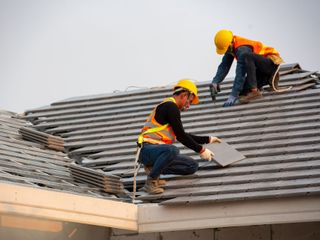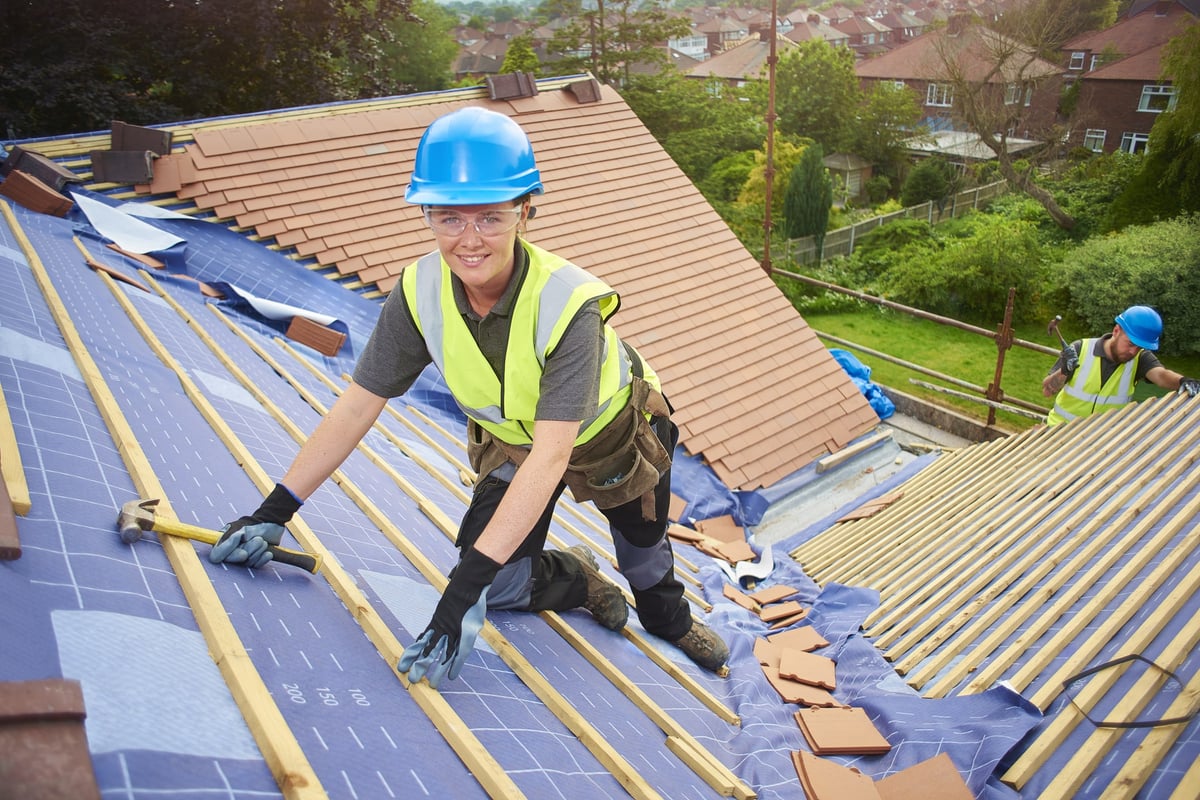Contact a affordable Toledo Roofer for reliable roofing services.
Exactly How to Assess Different Roofing Choices for Your Building Needs
Reviewing roof covering alternatives for your building requires an extensive technique that thinks about various elements such as the intended use of the framework, neighborhood environment conditions, and material attributes - Roofing Contractor. It is necessary to weigh the benefits and downsides of different roof types, from asphalt shingles to steel and clay ceramic tiles, while likewise factoring in first prices and long-term maintenance.
Assessing Your Structure's Requirements
To properly evaluate roof covering options, begin by extensively analyzing your building's requirements. Start by thinking about the structure's planned usage, as various structures may require differing roof specs. Household roof coverings often prioritize looks and insulation, while business buildings might focus on sturdiness and load-bearing capacity.
Next, assess the regional environment conditions that will affect roof covering performance. Elements such as temperature changes, precipitation degrees, and wind patterns can influence material option and design. A roof that succeeds in a warm climate may not do as well in areas prone to heavy snowfall or extreme warm.
Furthermore, examine the architectural honesty of your building. Guarantee that the existing structure can sustain the picked roof covering products, specifically if taking into consideration heavier choices. It is additionally essential to evaluate any kind of regional building ordinance or policies that might dictate specific demands for roof covering systems.

Contrasting Roofing Products
Once a detailed evaluation of your structure's demands has been finished, the next action entails comparing different roof covering materials. Each product provides distinct benefits and downsides, making it vital to align your selection with your specific needs and scenarios.
Asphalt tiles are extensively recognized for their price and simplicity of installment, making them a preferred choice for domestic structures. On the other hand, metal roof, known for its resilience and longevity, can hold up against extreme climate condition yet might feature a greater initial financial investment.
Clay and concrete tiles provide excellent thermal insulation and visual allure, especially for Mediterranean-style style, yet they call for an even more robust structural support as a result of their weight. Timber shakes offer a natural appearance and excellent insulation properties yet may demand much more maintenance and are at risk to fire threats.
Assessing Expense and Budget Plan
Analyzing your roof choices demands a cautious assessment of expense and budget factors to consider. The general spending plan for a roof task comprises a number of factors, consisting of product costs, labor expenses, upkeep, and prospective long-lasting financial savings. It is important to develop a clear budget before sites exploring particular roof products, as this will assist the decision-making process and help you avoid overspending.
Begin by getting quotes from numerous contractors to comprehend labor prices in your region. Make certain that these quotes consist of all needed services, such as removal of the old roofing, setup, and any added functions, like insulation or air flow renovations - Roofer. Next off, analyze the expense of various roofing materials, taking right into account both initial installment costs and anticipated life-span

Comprehending Power Performance
Energy efficiency plays a critical role in the option of roof materials and systems, dramatically influencing both energy intake and overall convenience within a structure. A well-chosen roofing system can improve thermal efficiency, lowering the demand for home heating and cooling down systems, which subsequently decreases power bills and decreases environmental influence.
When assessing roof covering alternatives, think about products that mirror as opposed to absorb warm. Light-colored or reflective roof items can significantly reduce roof covering surface area temperature levels, causing reduced power usage throughout hot months. Furthermore, appropriate insulation and ventilation are necessary to enhance the power efficiency of the whole roofing system. Insulation stops warmth transfer, while air flow alleviates warmth accumulation in the attic space.
An additional vital aspect is the roof's long life and maintenance needs. Long lasting materials that require much less frequent replacement add to long-term energy savings. In addition, the energy effectiveness of a roof covering system can also be examined through its conformity with recognized sustainability ratings such as ENERGY CELEBRITY or LEED.
Taking Into Consideration Visual Appeal
A roof covering's aesthetic allure considerably influences the general look of a building, enhancing its building style and boosting curb charm. Perrysburg Roofer. When evaluating roof covering choices, it is important to think about how the selected product, color, and layout will balance with the existing structure and neighborhood. A properly designed roof covering can raise even the simplest of structures, changing them right into aesthetic prime focus
Various roofing materials provide numerous aesthetic high qualities. Typical tiles may evoke a classic beauty, while steel roof covering can pass on a modern, sleek look. In addition, the shade of the roof material plays a vital role; lighter tones can make a building appear more sizable, while darker tones might create a cozier atmosphere.
Furthermore, building aspects, such as dormers and eaves, can enhance the roof covering's visual impact. It is recommended to speak with professional designers or engineers to ensure the chosen roof choice aligns with the overall design intent. Inevitably, a roof covering ought to not just offer useful advantages yet likewise contribute positively anchor to the structure's aesthetic, showing the owner's preference and the personality of the surrounding setting.
Final thought
